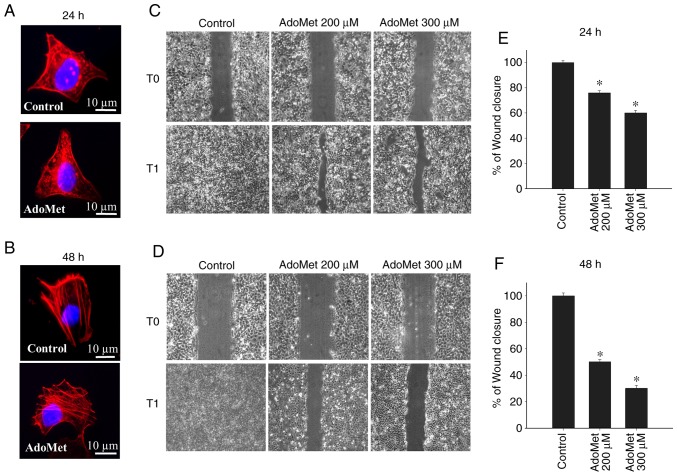Figure 3.
Effects of AdoMet on cytoskeletal organization and motility of HNSCC cells. (A) Cal-33 and (B) JHU-SCC-011 cells were pre-treated or not (control) with 300 µM AdoMet for the indicated time periods and the F-actin polymerization was assessed by staining cells with rhodamine-conjugated phalloidin. Nuclei were stained blue with DAPI. Scale bar, 10 µm; original magnification, x1,000. Confluent monolayers of (C) Cal-33 and (D) JHU-SCC-011 cells exposed to diluents (control), or treated with 200 or 300 µM AdoMet for 24 and 48 h, respectively, were scratched with a micropipette tip and snapshot images were captured using a microscope to examine for wound closure. Images of the wounds corresponding to time zero (T0) and after 24 h (T1) of scraping in both cell lines are presented. Histograms (panel E and F) reporting the quantification of the wound area calculated as a percentage of the control using ImageJ software are depicted. Data represent the average of 3 independent experiments. The means ± SD are shown. *P<0.05 vs. control. HNSCC, head and neck squamous cell carcinoma; AdoMet, S-adenosyl-L-methionine.

